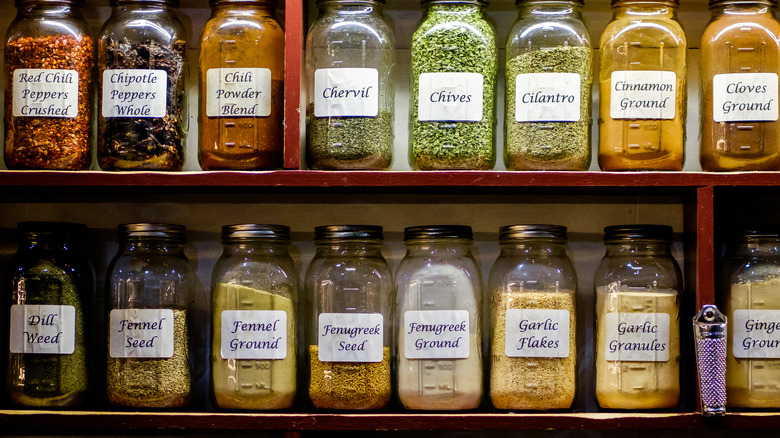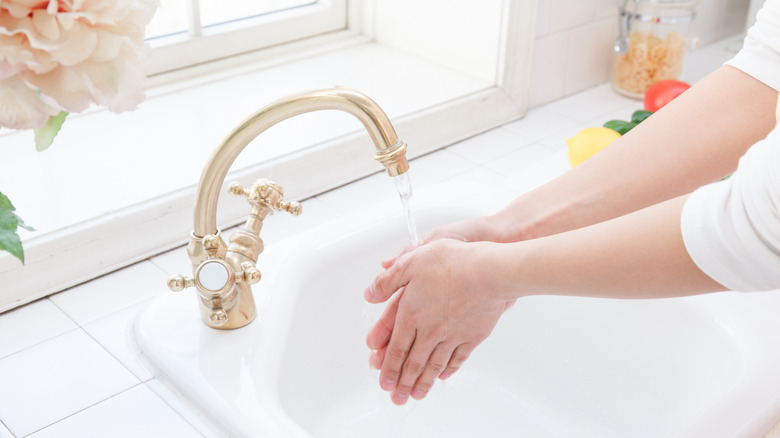The Inconspicuous Germ Magnet Lurking In Your Kitchen, According To Science
Keeping your home clean and free of germs is a never-ending job. While you might think that the most germ-laden place is the bathroom, the kitchen takes the cake. According to The Spruce, the kitchen is one of the dirtiest rooms not only because it is often the most highly trafficked, but also because of its potential for bacteria to grow. That is largely due to its unique mix of housing raw and cooked food, pockets of moisture, and intense temperature changes, from freezing to boiling.
In an NSF International Household Germ Study, the kitchen sponge was found to be one of the dirtiest things in your house. The study found that a whopping 75% of sponges and dishrags contained both salmonella and E. coli — as did 45% of kitchen sinks.
While that may be somewhat obvious since those items get used on a daily basis and take the brunt of raw food and messes, another area in the kitchen prone to germs is rather surprising.
Your spice rack may be harboring pathogens
Cross-contamination is problematic in the kitchen and is known to leave bacteria on various surfaces. The Department of Agriculture's Food Safety and Inspection Service conducted a study in which they had participants prepare and cook a meal in a simulated kitchen (via Good Morning America). The food they had to prepare was raw ground turkey that had been injected with a tracer virus known as MS2. Once the study members were done cooking, 12 key surfaces were tested for bacteria from the tracer virus. The study found that 48% of spice racks contained MS2.
"It was a little bit of a surprise to us that we saw so much contamination on spice bottles since we were really invested in other parts of the kitchen," says Benjamin Chapman, Ph.D., who was the lead author of the study and also a food safety specialist, per Today. "But spice containers really popped out as the number one place that we saw contaminated."
Chapman says the team expected cross-contamination to be highest on refrigerator handles, faucets, and trash receptacles.
How to keep your spice rack clean
Healthline reports that, every year, 600 million people worldwide get sick from food. A major cause of foodborne illness is cross-contamination, so, by simply following a few rules, you can cut down on the potential for cross-contamination considerably. Anything you touch with dirty hands can lead to the spreading of bacteria, which can result in a foodborne illness.
A foolproof way to keep your spice rack and spice jars clean is to wash your hands properly each and every time you reach for a spice. That goes for every member of your household, too. It's also important to remember that washing your hands sufficiently to get rid of any bacteria from raw food takes longer and requires more effort than simply running a few drips of water over your hands, per Food Network. You must wet your hands with warm water, add soap, and scrub them for 10-15 seconds before rinsing and drying them. Use paper towels, not dish towels, which can also retain bacteria.
Furthermore, you must also do this after every time you touch raw food and before you reach for a spice. If you have any doubts about whether all the members of your household have done that, it never hurts to wash down your spice rack and individual spices with some soapy, warm water.


